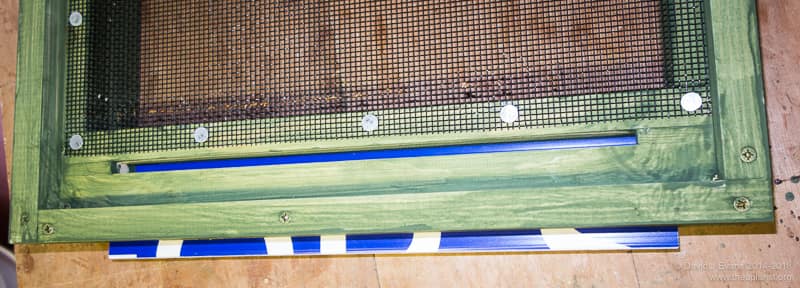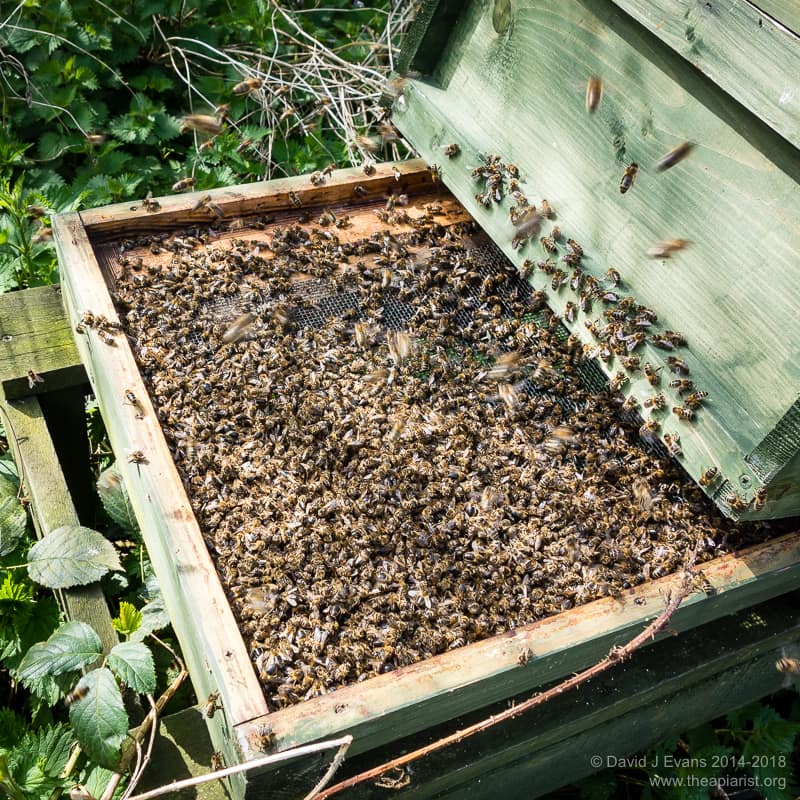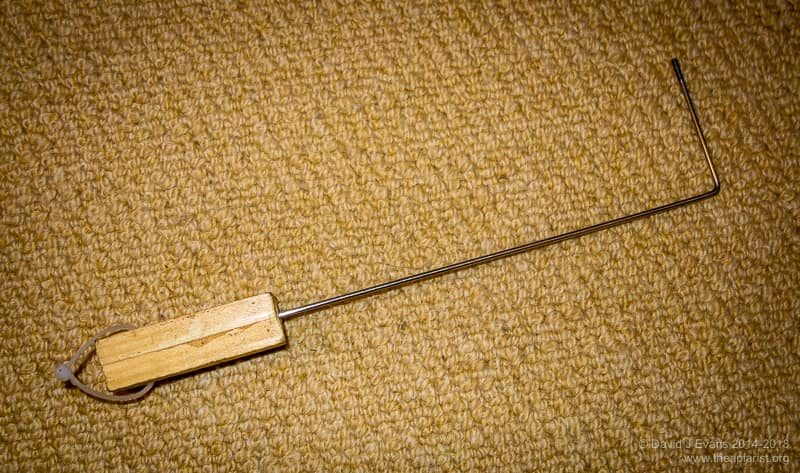Avoiding disaster

Kewl floor entrance …
Kewl floors (sometimes called Dartington-inspired floors) have an ‘L’ shaped entrance that I think offers advantages to the colony when defending against wasps (or robbing by nearby colonies) and negates the need for mouse guards. However, the very feature that provides these advantages – the ‘L’ shaped gap about 9mm high – also makes them liable to get blocked with bee corpses during late winter.
During the depths of the winter, with a relatively quiescent colony and winter bees that are only a couple of months old, this isn’t usually a problem. However, as the winter turns to spring and the colony starts to become active again the attrition rate increases. As the weather improves and the winter bees expire the corpses can block the entrance, trapping the remaining colony inside.

Blocked Kewl floor …
This is the sort of thing that should only happen once†. Early in the season you go and visit the apiary on an unseasonably warm and calm day. With one exception the colonies look reasonably active. Foragers are returning with pollen and there are bees setting off on orientation flights.
If you listen carefully at the hive with no activity you might be able to hear the bees panicking inside. Splitting the brood box from the floor reveals the scale of the devastation. It’s a distressing sight. If you’re lucky there will be good numbers of flying bees. If you’re unlucky the colony will have already perished or there will be obvious signs of Nosema.
With reasonably regular visits to the apiary this is a situation that can easily be avoided. Insert a piece of bent wire – I use an old bicycle spoke – in the entrance slot, turn through 90° and drag it across the full width of the entrance. The ‘vertical’ piece of the wire needs to be longer than the depth of the entrance slot on the floor, but not so long that it fouls the bottom of the frames.
† But, do we always learn from our mistakes? I’ve had this happen a couple of times. In both cases the colony was strong going into the winter and on a double brood box. The first time the colony perished, though it’s not actually clear whether they died from being trapped or from a midwinter virus overload. The second time, April 2015 (shown in the hive photo above), the colony survived. When I discovered the blocked entrance there were still lots of flying bees. I swept the floor clean and cleared the entrance, reassembled the hive and left them to it. On checking a couple of days later they were taking in pollen and I found the laying queen, none the worse for wear, at the first full inspection the following week.

Join the discussion ...